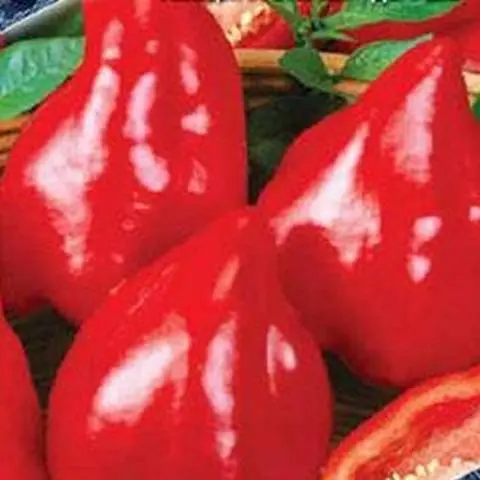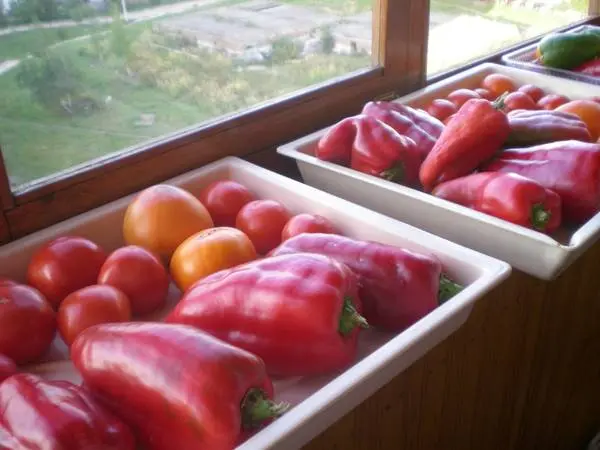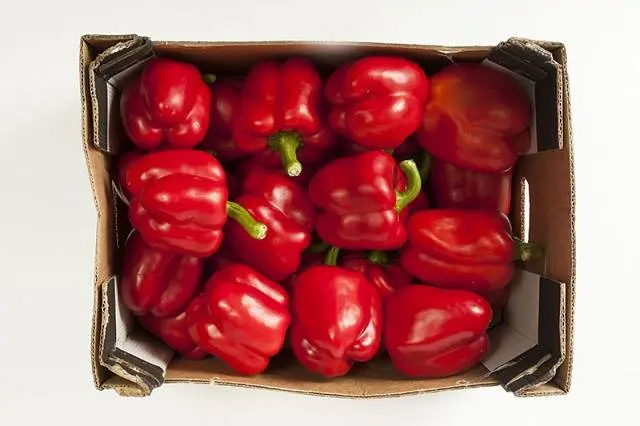When choosing lettuce varieties that can grow not only in the south, but also in the northern regions, you should pay attention to the bull’s heart pepper variety offered by the Siberian agricultural company Uralsky Dachnik.

Description
“Bull’s Heart” is an early ripe variety that allows it to be grown outdoors in the Siberian region. Bush height 50 cm.
For some reason, breeders are very fond of calling varieties of various crops “bull’s heart.” Sweet pepper “Bull’s heart”, tomato variety “Bull’s heart”, cherry “Bull’s heart”. Moreover, if the first two really look like a heart (anatomical, not stylized), then the sweet cherry has nothing in common with this organ, except for its large size.
The wall thickness of this variety reaches 1 cm, and the weight is up to 200 g. Ripe fruits of saturated red color.
Since the variety is productive, and the fruits are quite heavy, the bushes may need a garter. It is better to stick a support for tying next to the plant at the same time as planting seedlings, so as not to disturb the brittle stems and roots of pepper once again.
Pepper yields can be increased by harvesting unripe fruits at the stage of so-called technical ripeness.
In this case, the fruits must be put on ripening. Sometimes you can come across the term “ripening”. This is the same.
How to properly ripen
It should be noted that, as in the photo, the pepper will not ripen.

When ripe in the open air, the fruits begin to wither.
For each row of green fruits, one ripe vegetable must be placed. Instead of pepper, you can put a ripe tomato (there is a risk that it will start to rot) or a ripe apple. After filling, the box is closed.
The bottom line is that the ripe fruit releases ethylene, which stimulates unripe peppers to ripen.
In this case, the newspaper will delay the spread of ethylene and the fruits will not ripen. Due to the volatilization of ethylene, the box must not be kept open.
For ripening, peppers should be with long tails. In the process, the fruit will still draw nutrients from the remaining cutting. It is necessary to check the bookmark every 2-3 days. If the paper is damp, it must be replaced. Instead of newspapers, you can use paper napkins.
The box can also be replaced with a plastic bag lined with paper.

While the first batch of peppers ripens in a box, the second part of the fruit has time to form and pour on the bush, thus increasing the yield.
Bull’s heart pepper is a universal variety, suitable for salads, preservation, culinary processing and freezing. For a salad, the most delicious pepper is just picked from the garden, where it ripened on a bush. Ripened in a box is suitable for conservation for the winter.
Good keeping quality also belongs to the advantages of this variety. When stored in a refrigerator or a subfield with an air temperature of 0-2 ° C, peppers can lie for a month longer than tomatoes or eggplants.
A large crop can be stored in boxes with calcined river sand. Wrapping paper or newspaper is placed at the bottom of the box and the pods are laid, sprinkling it with sand. It is not necessary to wash before laying, only to remove surface contaminants.
Inventive summer residents who do not have space to store a large crop of peppers have found a very interesting way to reduce the volume occupied by fruits.
Frozen Pyramid
In mature large fruits, we cut out the core. We do not throw away the core, it will still come in handy. Dip each pod one by one in boiling water for 30 seconds.
After cooling, we fold the peppers one into one, thus forming a pyramid. It is not necessary to be zealous with pushing the pods into each other. Boiled peppers are quite soft and easily inserted into each other.

We put the finished pyramid in a plastic bag, fill the remaining voids with the core. Such a pyramid takes up little space in the freezer, allowing you to save even a large crop. In winter, thawed peppers will be indistinguishable from fresh ones.
Reviews
They often touch on fresh fruits in a salad, since with Oxheart it is difficult to resist simply eating fresh fruit right away.









